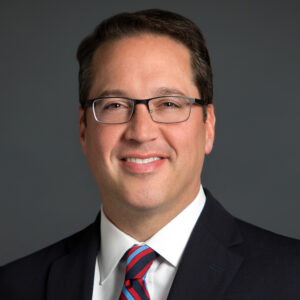Pittsburgh, PA
Employment and Labor Alert
(by Alex Farone and Steve Antonelli)
All employers must soon resume physically inspecting the Form I-9 and employment eligibility documentation for new employees, a requirement that has not been strictly enforced since the beginning of the COVID-19 pandemic.
The U.S. Immigration Customs Enforcement (ICE) of the Department of Homeland Security (DHS) had temporarily allowed remote I-9 verification during the pandemic for employees working remotely. After several extensions, these permitted flexibilities are scheduled to end on July 31, 2023. ICE has announced that employers will have a 30-day grace period until August 30, 2023, to reverify in person all employment eligibility documents for employees who were hired after March 20, 2020 with virtual or remote examination. This requirement particularly relates to Section 2 of the Form I-9, where the employer must certify by signature under penalty of perjury that they have examined evidence of the employee’s identity and documentation authorizing them to work in the U.S. within three business days of the employee’s first day of employment, thereby verifying employment eligibility. For all new hires moving forward, the in-person verification requirements will resume on July 31, 2023.
Employers may perform the in-person inspections themselves by requesting that these employees visit the office or by sending another employee to perform the inspection in person. Alternatively, employers are permitted to designate an authorized representative, including non-employees such as third-party notaries, to conduct the in-person inspection on behalf of the employer. In fact, DHS permits any person other than the employee in question to act as an employer’s authorized representative. Some employers utilize third-party services for this function, and others request contact information for a friend or family member of the employee to have them perform this role. Using the employee’s friend or family member in this capacity is certainly the most cost effective and the least administratively burdensome option, but employers should be cautious of potential pitfalls as ICE requires strict compliance and employers will be held liable for any violations, whether intentional or unintentional.
ICE issues thousands of Notices of Inspection to employers every year, and any employer can be subject to inspection. During such an inspection, ICE will review the employer’s I-9 forms and supporting documentation for compliance. While employers are given at least 10 business days to make corrections to any technical violations found on the forms, they are subject to monetary fines for all substantive violations, and uncorrected technical violations. Furthermore, employers that are found to have knowingly hired or continued to employ unauthorized workers will be required to cease the activity and may be civilly fined and/or criminally prosecuted. In 2015, an event planning company in California was fined over $600,000 for technical violations on I-9 forms, with the majority of the violations stemming from the employer’s consistent failure to sign Section 2 of the I-9 form.
Due to the risk of monetary fines, employers should consult an attorney before engaging an authorized representative to perform in-person verification on the employer’s behalf. Employers should also note that some state laws have additional requirements concerning authorized representatives—for example, notaries in California are prohibited by the California Secretary of State from completing or certifying I-9 forms unless they are bonded immigration consultants.
ICE has issued guidance on how to correctly reverify the I-9 forms. Ideally, employers should have been writing “remote inspection completed on [date]” in the Additional Information box in Section 2 of the I-9 form for all remote inspections. If the same person is doing the reverification in person, the verifier should note in the same Additional Information box:
COVID-19
Documents physically examined on [date]
By [verifier initials]
If a different individual is performing the in-person verification than performed the remote verification, the same notation should be made, but with the verifier’s full name and job title instead of initials. If the verifier is an authorized representative rather than an employee of the employer, the title should state “Authorized Representative.”
DHS issued a proposed rule in 2022 that would give the Secretary of Homeland Security the authority to continue to extend flexibilities and provide alternative options for I-9 verification, but notably the proposed rule did not itself extend the flexibilities or create these alternative options. The public comment period for this proposed rule ended in October 2022, and DHS is expected to issue a final rule later this year.
Employers should therefore start planning now to ensure compliance by August 30, 2023. Employers should (1) make a list of all employees hired after March 20, 2020 who only received a remote inspection of their employment eligibility documents, (2) decide whether and how it will use authorized agents to perform the in-person re-inspections, (3) notify the affected employees of what will now be required, and (4) create a plan for dealing with employees who do not make themselves or their documentation available by the deadline. For unionized workforces, employers should notify the union’s representatives about the approaching deadline and the steps the employer plans to take to address reverification for those employees whose papers were verified remotely since March 2020. Detailed instructions should be given to any authorized representatives, and as a best practice the employer should retain a copy of the email or other communication by which the employer assigned someone to act as the authorized representative. If an employer has not performed an I-9 self-audit in the recent past, this would be an ideal time to do so.
If you have any questions about the impact of Form I-9, please contact Alexandra G. Farone at (412) 394-6521 or afarone@babstcalland.com or Stephen A. Antonelli at (412) 394-5668 or santonelli@babstcalland.com.


